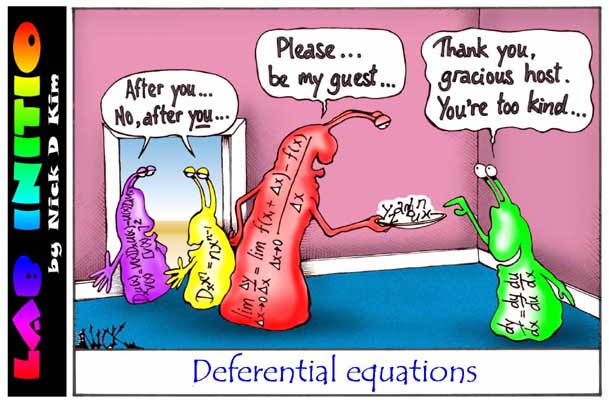

The magnetic topology of a generic magnetic cloud was given by Lundquist in 1950 (see below), assuming a 'force-free' plasma and a cylindrically-symmetric flux tube. We first start off with Maxwell's Equations for our plasma:
div(B) = 0
curl(B) = µ0J + µ0(dD/dt)
div(D) = rho
curl(E) = -dB/dt
Since our plasma is globally electrically neutral, we can neglect the electric contributions of Maxwell's equations, since we are mostly dealing with bulk motion of the plasma, which we consider a continuous medium. Therefore, we are left with:
div(B) = 0
curl(B) = µ0J
Furthermore, we make the assumption that our plasma is magnetic-force-free. Also, we neglect any pressure gradients and/or gravitational and viscous terms, so that:
Force = J × B = 0
and therefore, J must be parallel, and hence proportional to, B:
J = (alpha)B,
where, alpha is the constant of proportionality. Substituting this expression for J into our modified Maxwell's Equations above, we see that:
curl(B) = (alpha)B,
where we have absorbed the µ0 into (alpha). Taking the curl of both sides and rearranging gives:
curl(curl(B)) = grad(div(B)) - grad2(B) = curl((alpha)B)
-grad2(B) = (alpha) curl(B)
|
|
In cylindrical coordinates, the solution to this vector equation is given by zeroth- and first-order Bessel Functions of the first kind:
BA = B0 J0((alpha)R)
BT = B0 HJ1((alpha)R)
BR = 0,
where the subscripts stand for 'axial, tangential, and radial', respectively. B0 is the value of the magnetic field on the cloud axis, R is the radial distance from the axis, and H is the helicity (±1) of the cloud. So we see that the magnetic field, in our case, winds around the cloud axis in a helical fashion, with H giving the direction of the winding, and with the field dependent only upon the radial distance from the cloud axis.
We can calculate alpha by examining the magnetic field at the boundary of the cloud. At the boundary, the axial component of the magnetic field must go to zero. For the zeroth-order Bessel Function of the first kind, the first zero occurs at 2.4048, and therefore,
BA = 0 = B0 J0(2.4048)
which leads to,
2.4048 = (alpha)R0
where R0 is the radius of the cloud. Therefore,
alpha = 2.4048/R0
Furthermore, we want to calculate the total parallel current and total flux of the magnetic cloud, which are given by integrating the current density, J = (alpha)B, and the axial magnetic field, BA, respectively, over the cross-sectional area of the cloud. Using an online integrator to help integrate our Bessel Functions, the total parallel current and total flux are given as:
Current = 2(0.5192)(pi/µ0)B0 R0
Flux = 2(0.21588)(pi)B0 R02
Using the solution above as our model, we set out to develop a procedure
in IDL that would calculate what the model field looked like, compare our
model field with data from Wind, and minimize chi-squared with respect
to several different parameters in order to acheive the best fit possible.
Introduction
Mathematics
The
Program
Results
Acknowledgements